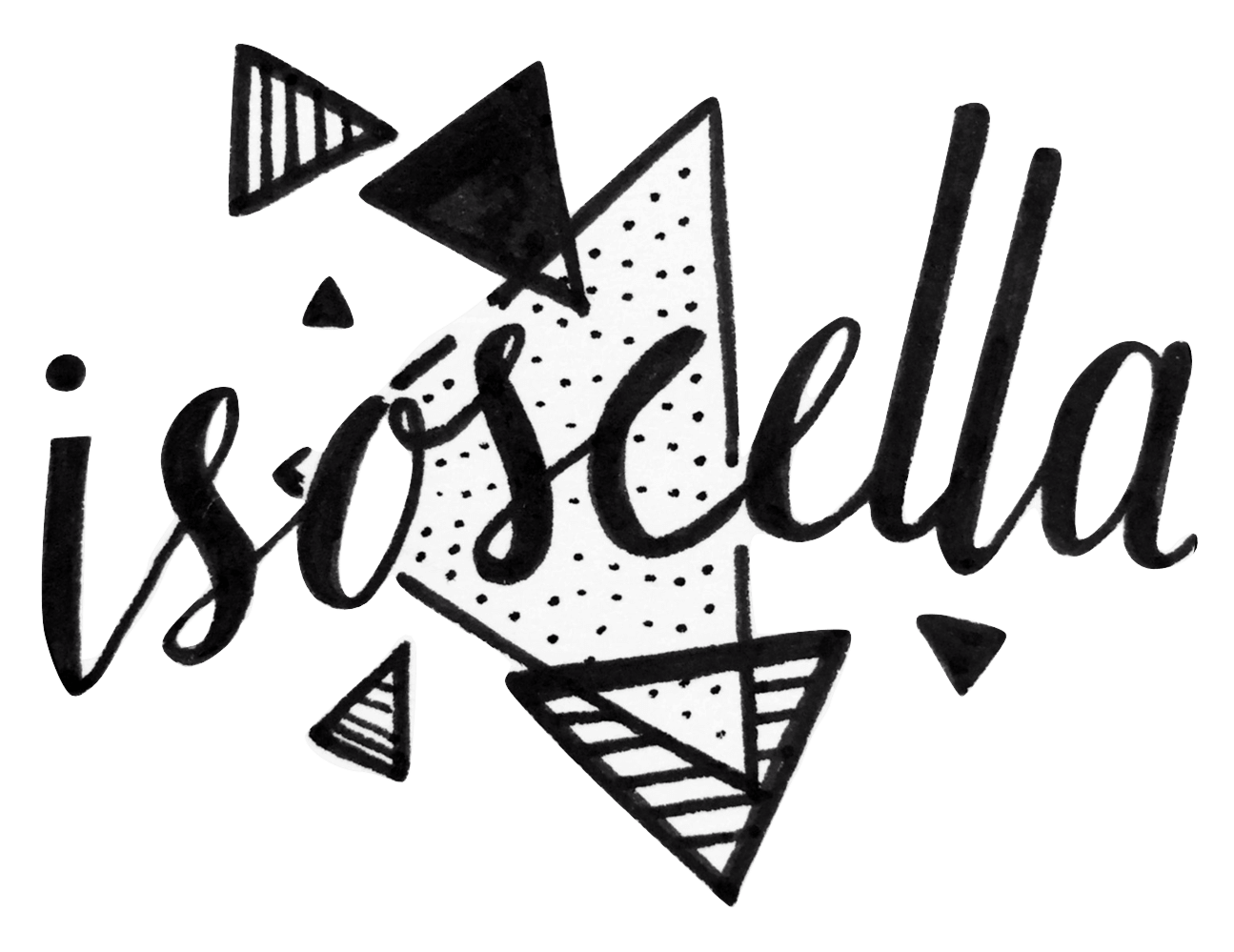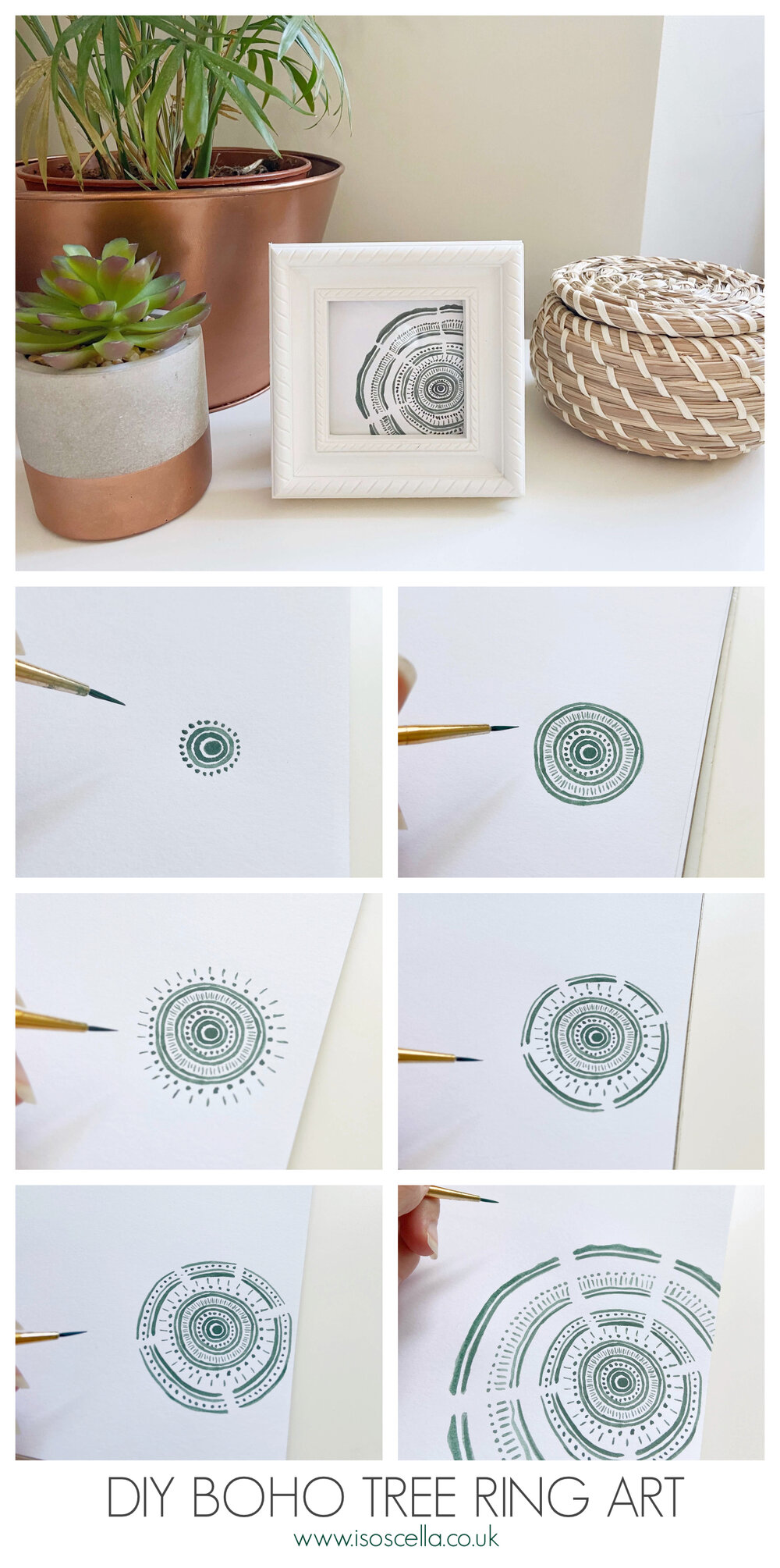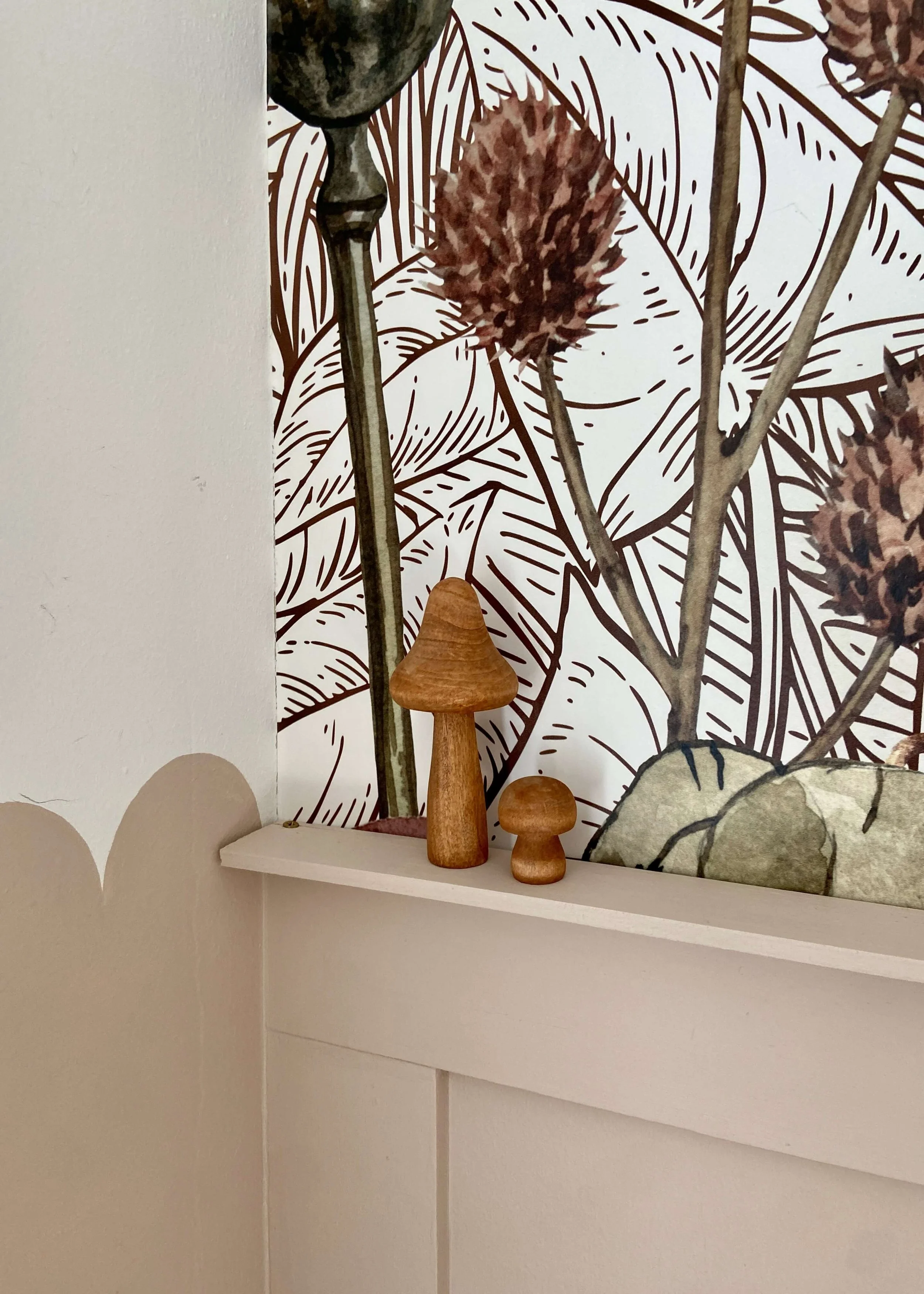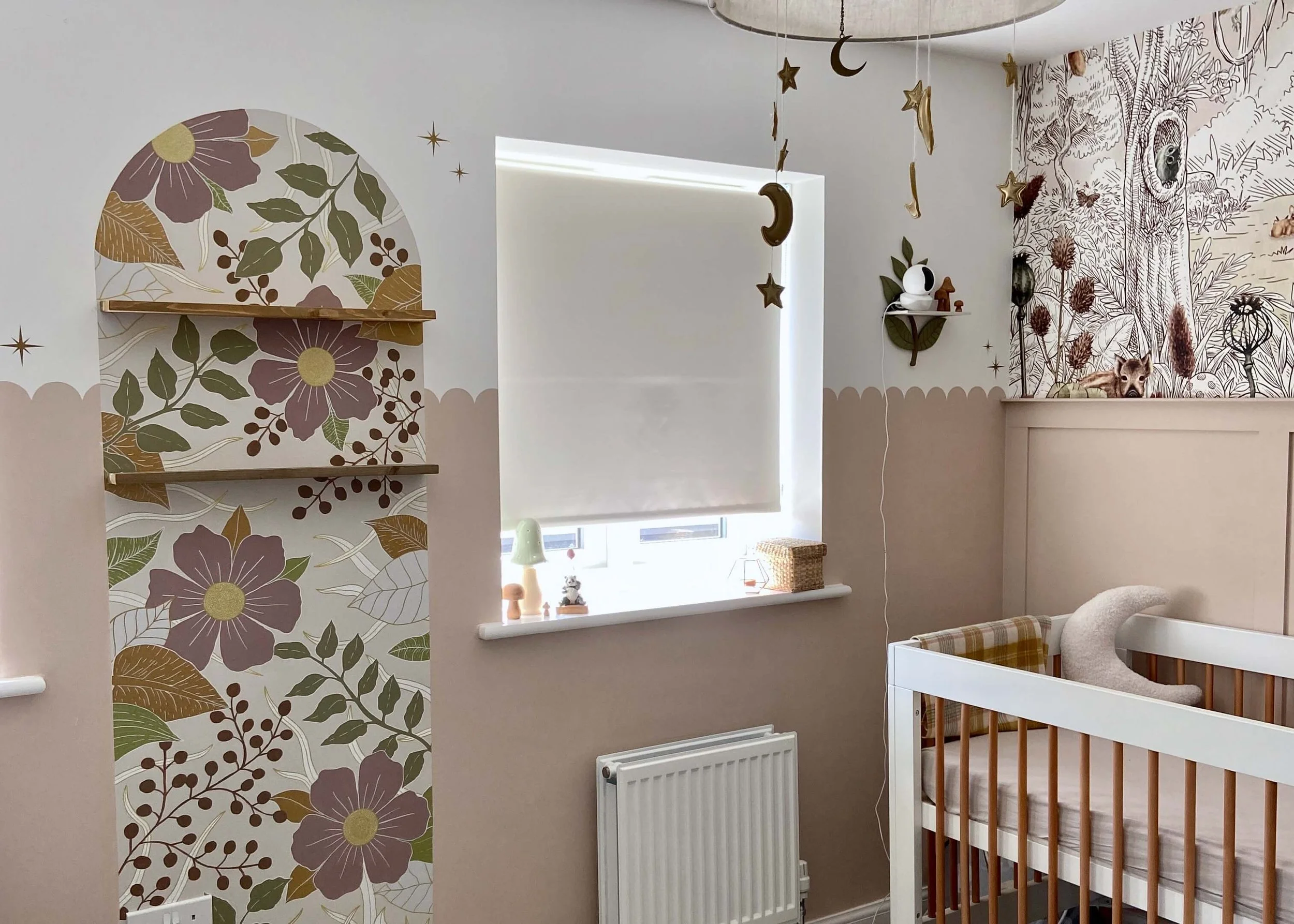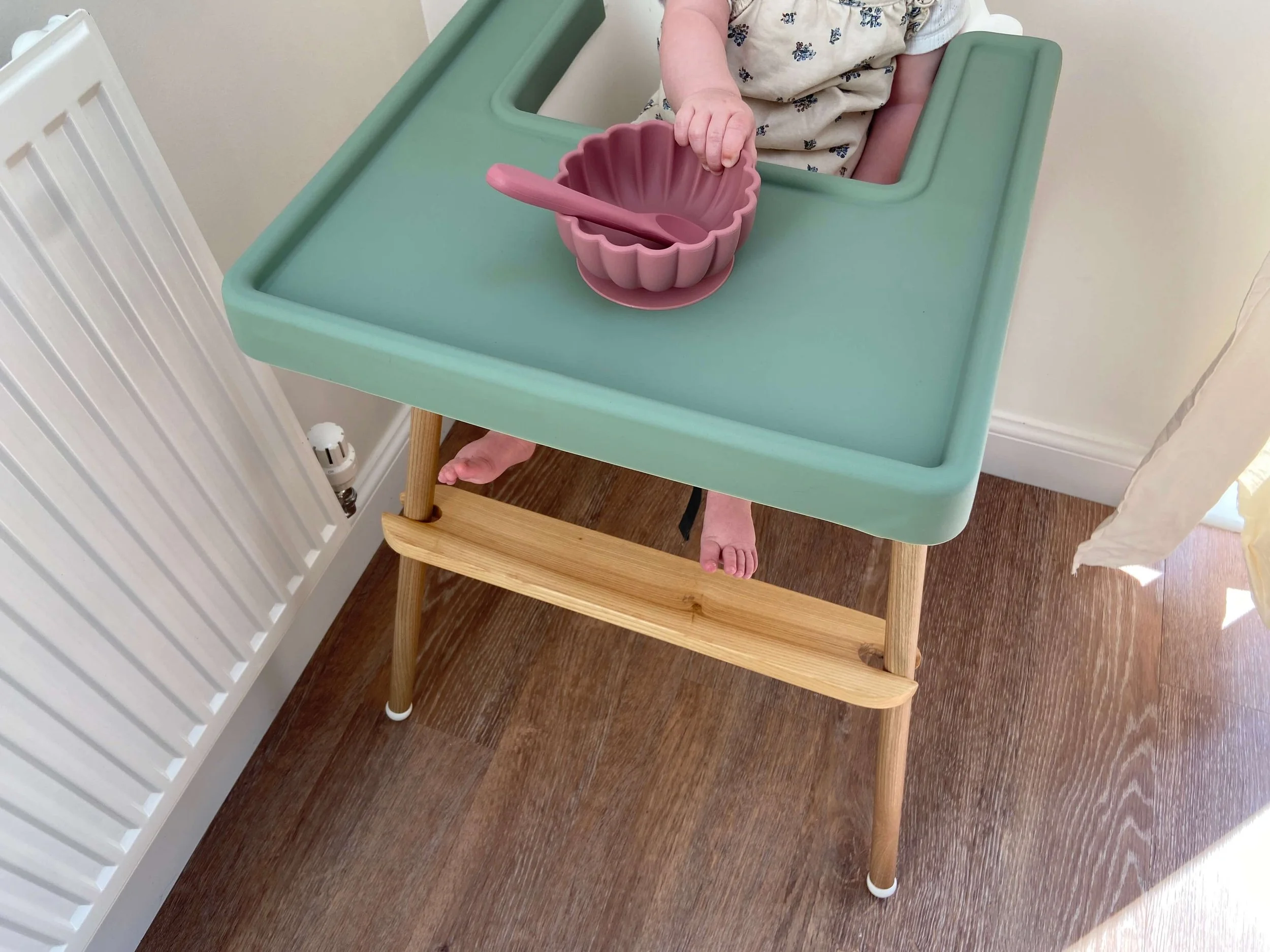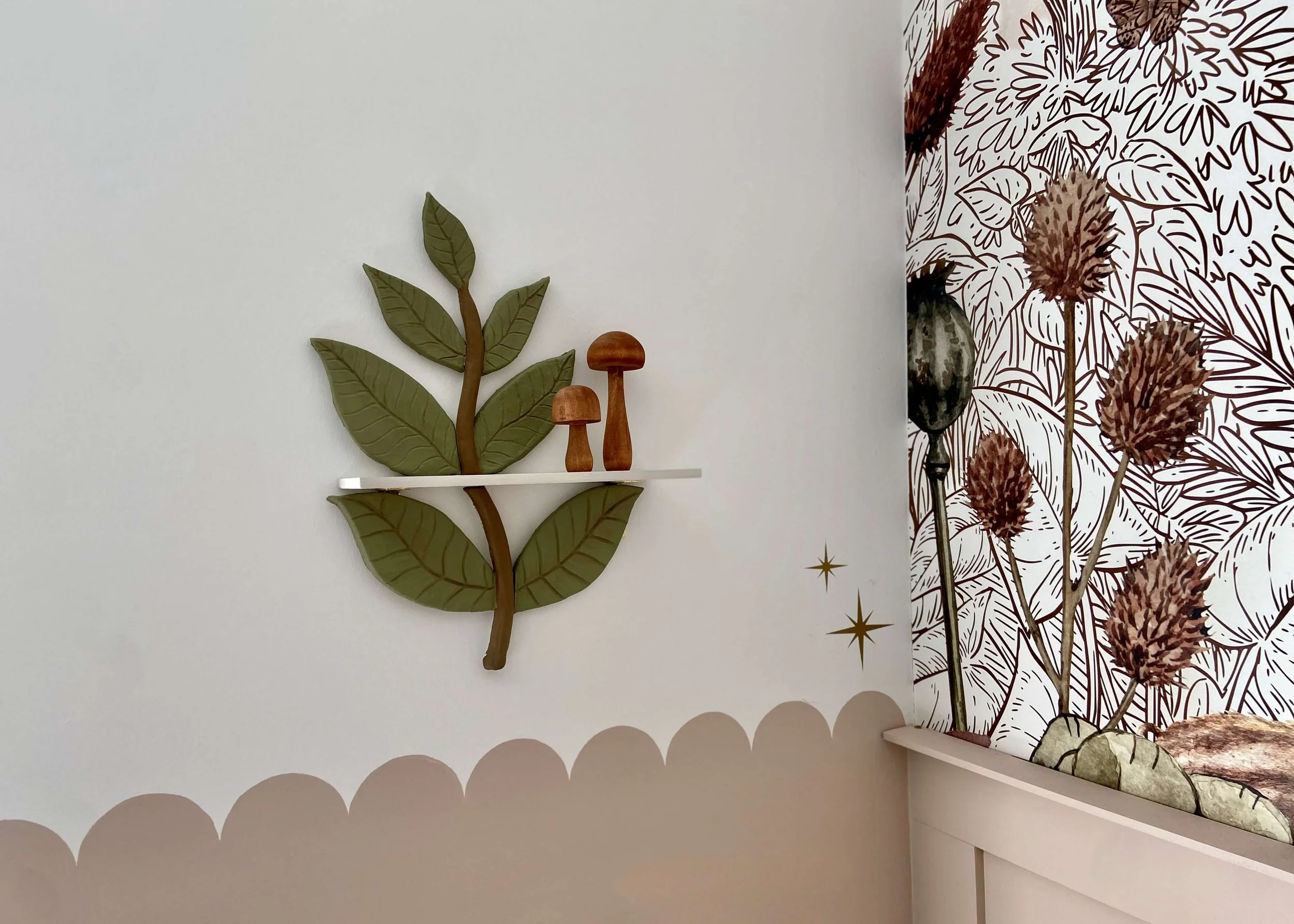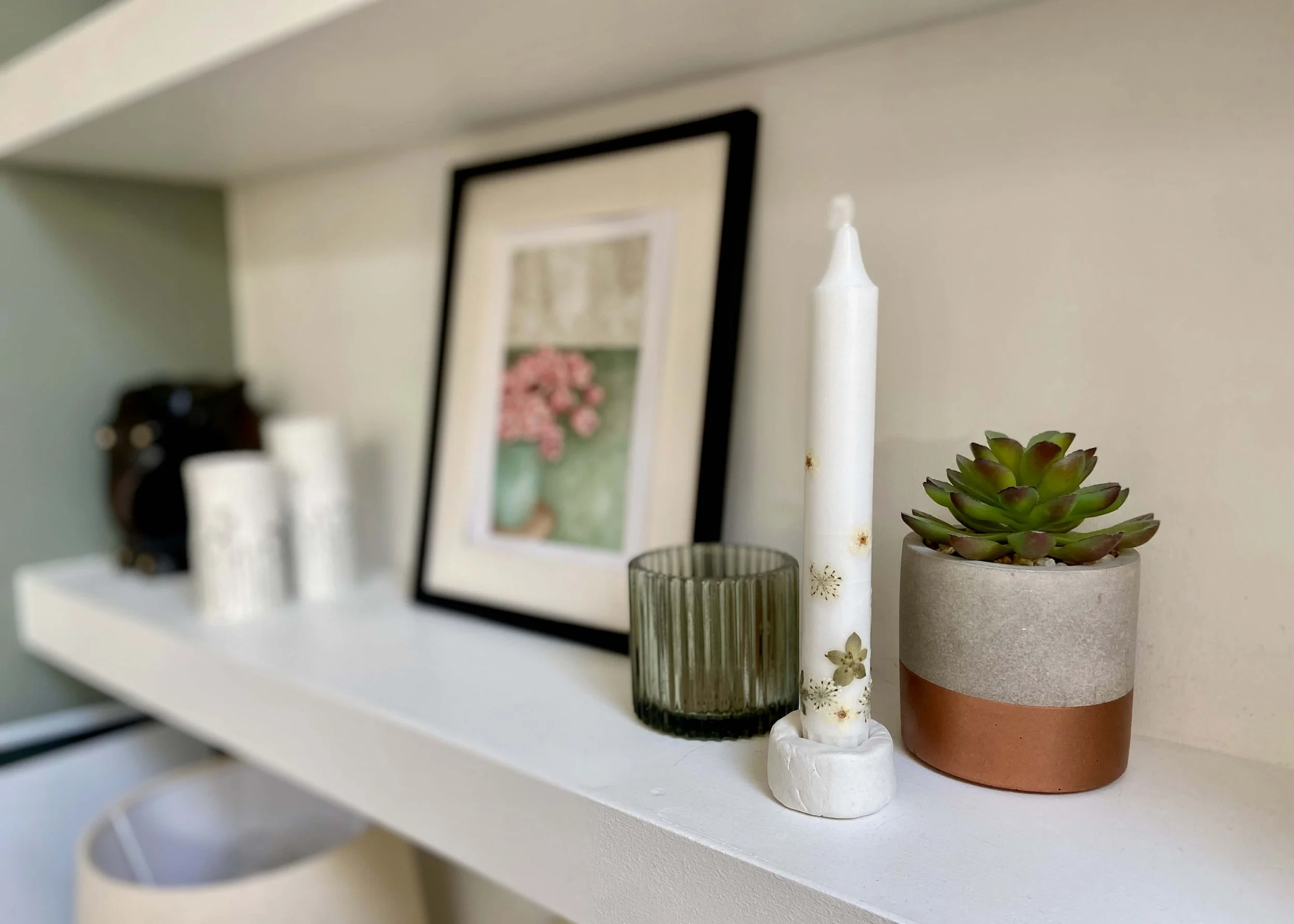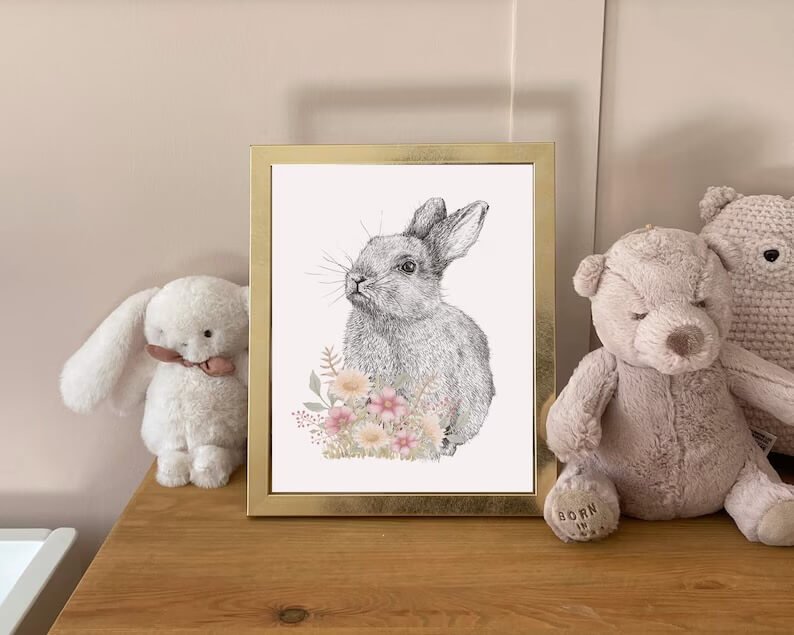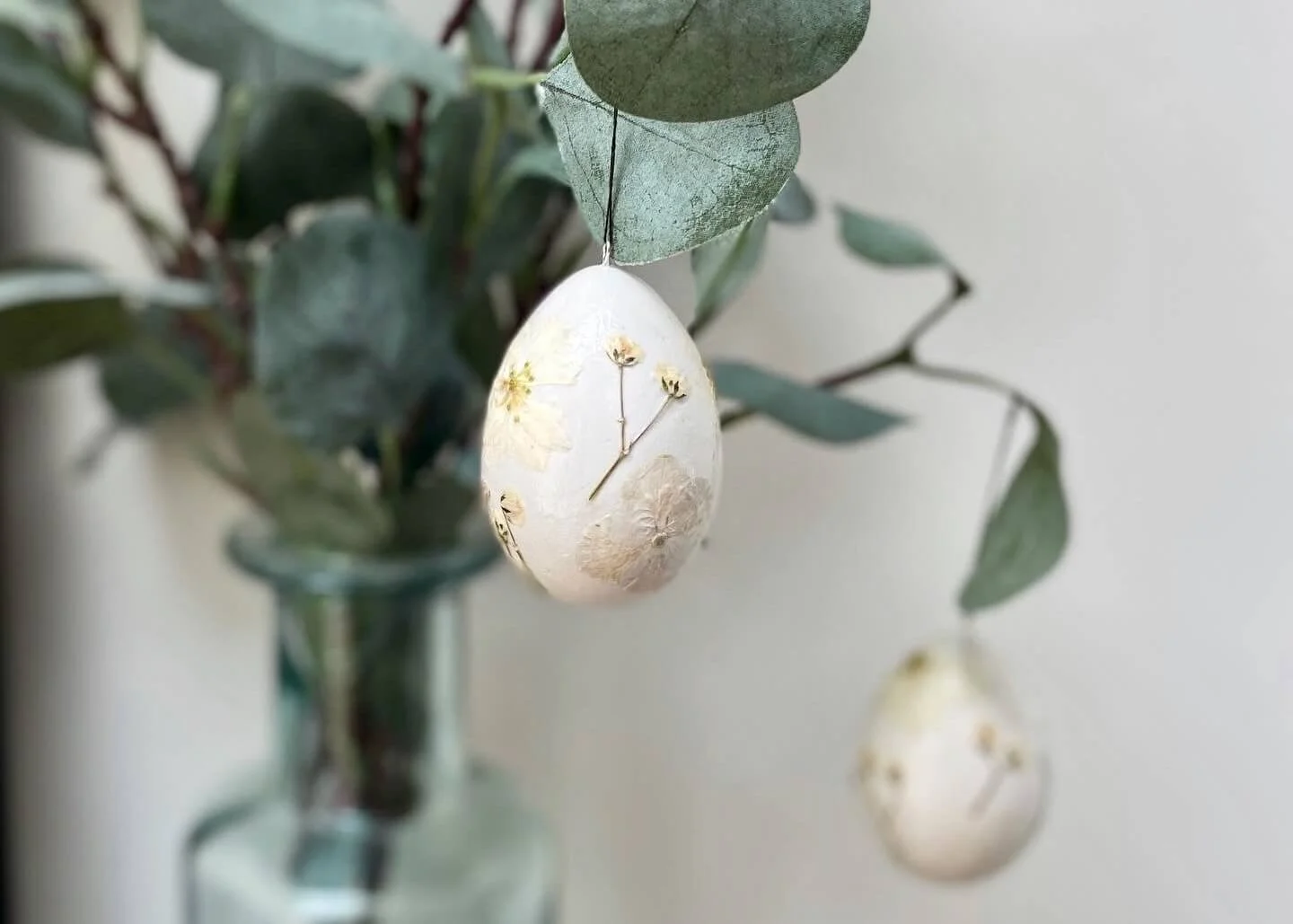Create a feature wall with a half panelled wall
If you follow the blog, you might know that I’m slowly making my way through the house decorating and DIY-ing. The other side of the office is still not quite done, I’ve got a bit of a creative block with it to be honest, so I thought it would be helpful to take a little detour and get started on our guest room. Our guest room has been pretty much abandoned since we moved in, and before this it was a chaotic mess of wedding decor, DIY supplies and various odds and ends. After a good tidy, I was thinking about what i could do and I of course landed on wall panelling. I love wall panelling, and after giving it a go in our office space and creating this faux beadboard effect in our cloakroom, I’m hooked. I wanted something different from what I’ve done in these other spaces, and so I decided to have a go at panelling just half the wall with both vertical and horizontal panels. A picture ledge along the top of the panelling is something that I may add later, but for now I’m so happy with how it’s looking and can’t believe what a difference it’s made. The colour of the wall paint we chose is a little pinker than I would have liked, it is still lovely, but the other half vetoed against a more orange/terracotta colour, and so this colour was our compromise. Let me know what you think of this project, and if you’re interested in doing it yourself, keep reading to find out how…
MDF or wood strips
1.
First of all, measure the width and height of the wall you want to panel, and work out how many panels you want. Get your panels or a sheet of wood cut to size. I wanted 5 vertical panels of 70mm wide and 1220mm tall, and 2 horizontal panels to cover 2800mm.
2.
Next, I painted my wall in my chosen colour (‘Homespun’ by Rustoleum) up to the height of where my panels would go.
3.
Subtract the total width of all panels from the total width of the wall and divide the result by the number of spaces you’ll have in between panels. Using this and the panels, start mapping out and marking where your panels will go.
4.
I’d recommend using MDF, but if like me you’re using what you have like plywood, seal the edges first with wood filler. Leave to dry and sand smooth.
5.
For both MDF and plywood, you’re gonig to want to prime your strips with an appropriate primer. This ensures that the wood doesn’t absorb too much of your wall paint and maintains it’s colour.
6.
Leave the first coat of primer to thoroughly dry. Following your primers instructions and if necessary lightly sand before painting a second coat.
7.
I’d recommend painting your panels before you attach them to your wall. I did two coats, leaving plenty of time in between to dry.
8.
To attach your panels to the wall, you can use various methods; No More Nails adhesive, panel pins or even screws. I opted for No More Nails again as I found this worked really well last time. Stick them where you’ve marked and hold until secure.
9.
When all your vertical panels are stuck to the wall, leave them to dry. Next, adhere the horizontal panels to create the panel across the top.
10.
Use wood filler to fill the gaps in between the panels and once dry, sand them smooth. Use decorators caulk to fill any gaps between the panels and the walls. Once dry, give your panelling one final coat of paint.
